Hubble Space Telescope: Image Deblurring with a Parallel Comptuer
|
This is the star system is known as R-Aquarii, this system is comprised of a hot star orbiting a mass losing giant star.
|
|

|
|
This visualization is demonstrating that data collected from cameras on satellites have flaws or problems and that those issues can be fixed using a mathematical technique called maximum entropy using a parallel computer system.
Duration: 2.5 minutes
Available formats:
720x486 (29.97 fps)
Frames
640x480 (29.97 fps)
MPEG-1
41 MB
352x240 (29.97 fps)
MPEG-1
21 MB
320x238
JPEG
61 KB
320x238
JPEG
61 KB
Audio Track
How to play our movies
|
|
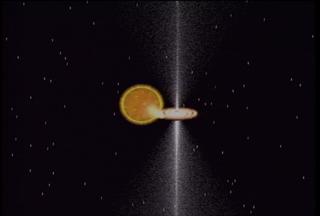
|
|
An accretion disk is formed around the hot star as it captures the mass being lost by the giant. The accretion disk beams matter away from the system in the form of a symmetrical jet.
Available formats:
720 x 486
TIFF
1018 KB
160 x 80
PNG
15 KB
320 x 216
JPEG
4 KB
80 x 40
PNG
3 KB
|
|
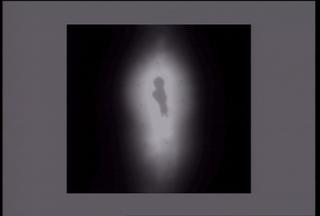
|
|
This is a raw image data from the Hubble Space Telescope faint object camera. We see that hot nebula matter that surrounds the entire system and the extended jet feature.
Available formats:
720 x 486
TIFF
395 KB
320 x 216
JPEG
3 KB
|
|
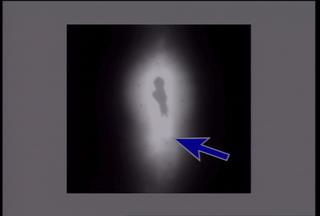
|
|
The raw data suffers from two problems. First, the flaw in the Hubble primary mirror; causes point sources of light to be spread out across many picture elements or pixels.
Available formats:
720 x 486
TIFF
990 KB
320 x 216
JPEG
4 KB
|
|
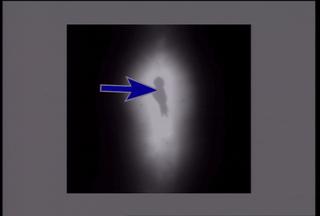
|
|
Secondly, the faint object camera has recorded the light in a highly non-linear fashion; known as Detector Saturation, the saturation manifests itself in the dark central pixels.
Available formats:
720 x 486
TIFF
993 KB
320 x 216
JPEG
4 KB
|
|

|
|
This is a colorized three-dimensional plot.
Available formats:
720 x 486
TIFF
1018 KB
320 x 216
JPEG
4 KB
|
|

|
|
The saturated region is a valley of missing data. Restoring the data with a mathematical technique called maximum entropy.
Available formats:
720 x 486
TIFF
414 KB
320 x 216
JPEG
4 KB
|
|
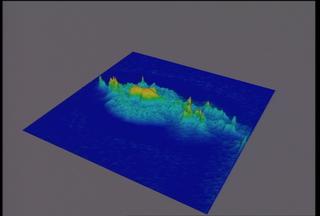
|
|
Using the surrounding unsaturated but highly blurred data. The method is able to reconstruct the emission peaks that occupy the saturated region.
Available formats:
720 x 486
TIFF
1017 KB
320 x 216
JPEG
5 KB
|
|

|
|
This region contains the main emission from the gas surrounding the hot star, the accretion disk and the cool star.
Available formats:
720 x 486
TIFF
1017 KB
320 x 216
JPEG
4 KB
|
|
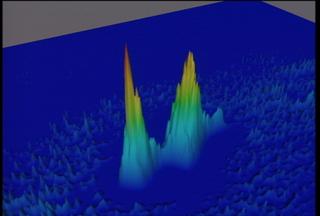
|
|
This is the most intense emission peak (shown on the left). To the right are smaller emission peaks coming from the more extended jet.
Available formats:
720 x 486
TIFF
1023 KB
320 x 216
JPEG
7 KB
|
|
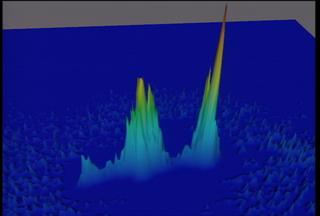
|
|
These techniques were performed on a parallel computer system, comprised of 8192 processors.
Available formats:
720 x 486
TIFF
1022 KB
320 x 216
JPEG
6 KB
|
|
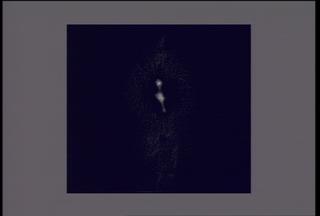
|
|
Massively parallel computations like this are able to correct imagery from spacecraft.
Available formats:
720 x 486
TIFF
403 KB
320 x 216
JPEG
3 KB
|
| Animation Number: | 2796 |
| Animator: | Dave Pape (SVS) (Lead) |
| Completed: | 1994-01-01 |
| Scientists: | J. M. Hollis (NASA/GSFC) |
| | John E. Dorband (NASA/GSFC) |
| Narrator: | J. Michael Hollis (NASA/GSFC) |
| Instrument: | HST/FOC |
| Series: | Narrated Movies |
| Video: | SVS1994-0012 * |
Keywords:
SVS
>> Maximum Entropy
DLESE
>> Space science
DLESE
>> Technology
|
|
Please give credit for this item to
NASA/Goddard Space Flight Center
Scientific Visualization Studio |
*Please note: the SVS does not fulfill requests for copies of the tapes in our library. On some of our animation pages, there is a direct link to a video distribution service from which tapes, handled by the Public Affairs Office (PAO)/Goddard TV, including some of our animations may be ordered. General information on this service can be found here. |
|
Back to Top
|